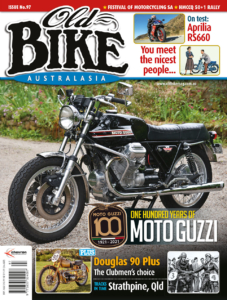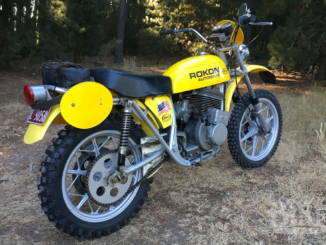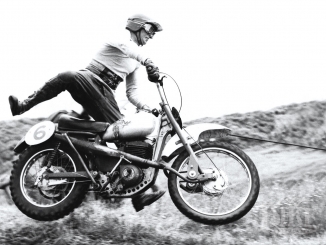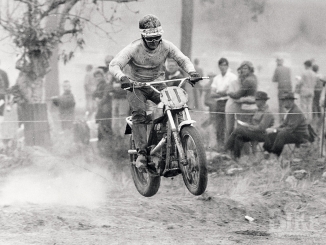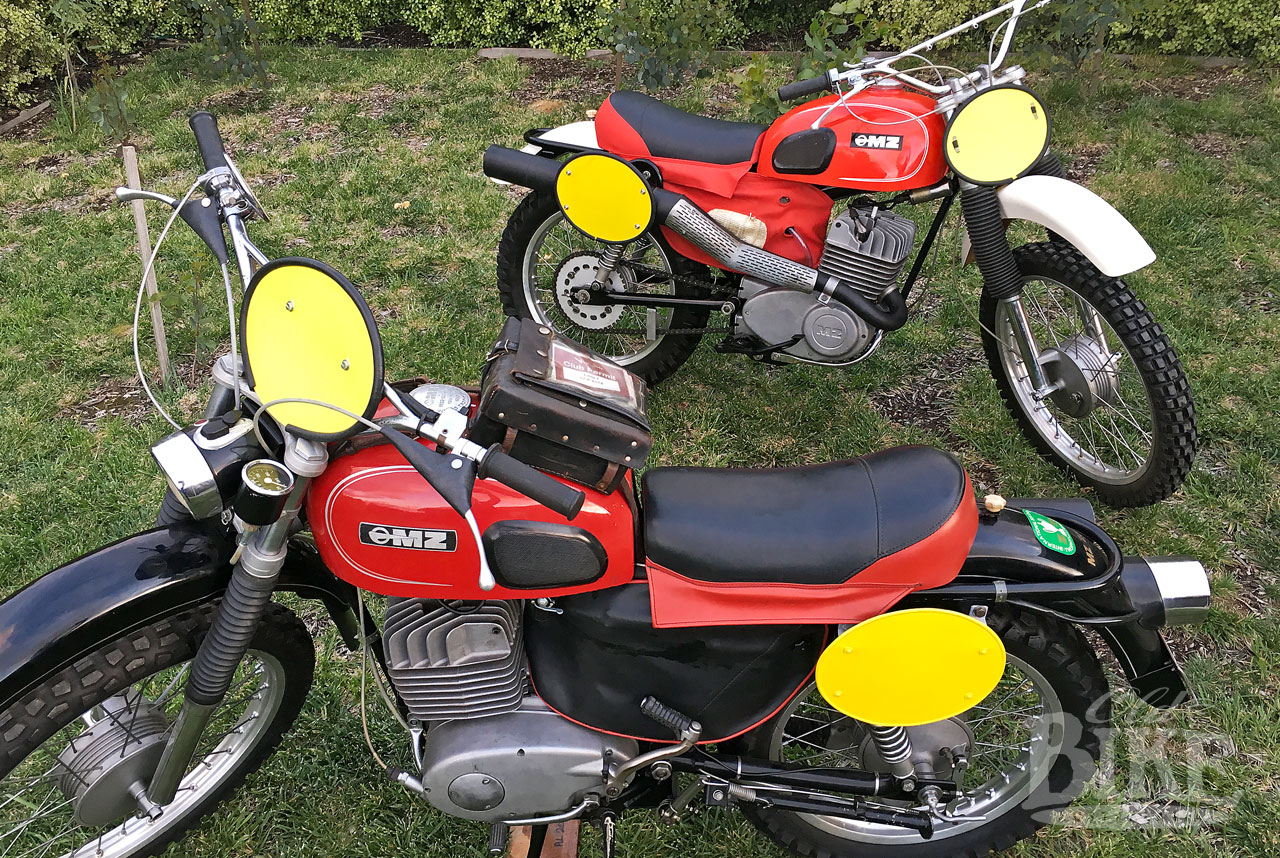
From our Old Bike Archives – Issue 97 – first published in 2021.
Story and photos: Peter Drakeford
I’ve always been taken by the legendary hard men of the Communist nations. Their dedication and training for competition as a member of their armed services might have been obligatory but were really foreign attributes for a freewheeling semi – hippie here in the 1970s. The bikes they used were unobtainable out here and, what is a typical human response – what you can’t have always seems more attractive.
While scores of Motoradwerk Zchopau ETZ road bikes scuttled around the streets of the UK and Europe, they were simply regarded as low-cost economical transport. The mystery lay in their racing bikes. The MZ allure to me was its performance in the 1960s ISDTs, as the tank cap says, ‘International Six Days World Trophy Winner 1963, 1964, 1965, 1966, 1967, 1969’. That gets your attention. While MZ certainly punched above their weight on the road race circuits, the father of the racing MZs, Walter Kaaden was instrumental in the machines’ ISDT successes, and the East German state used the victories as propaganda for sales.
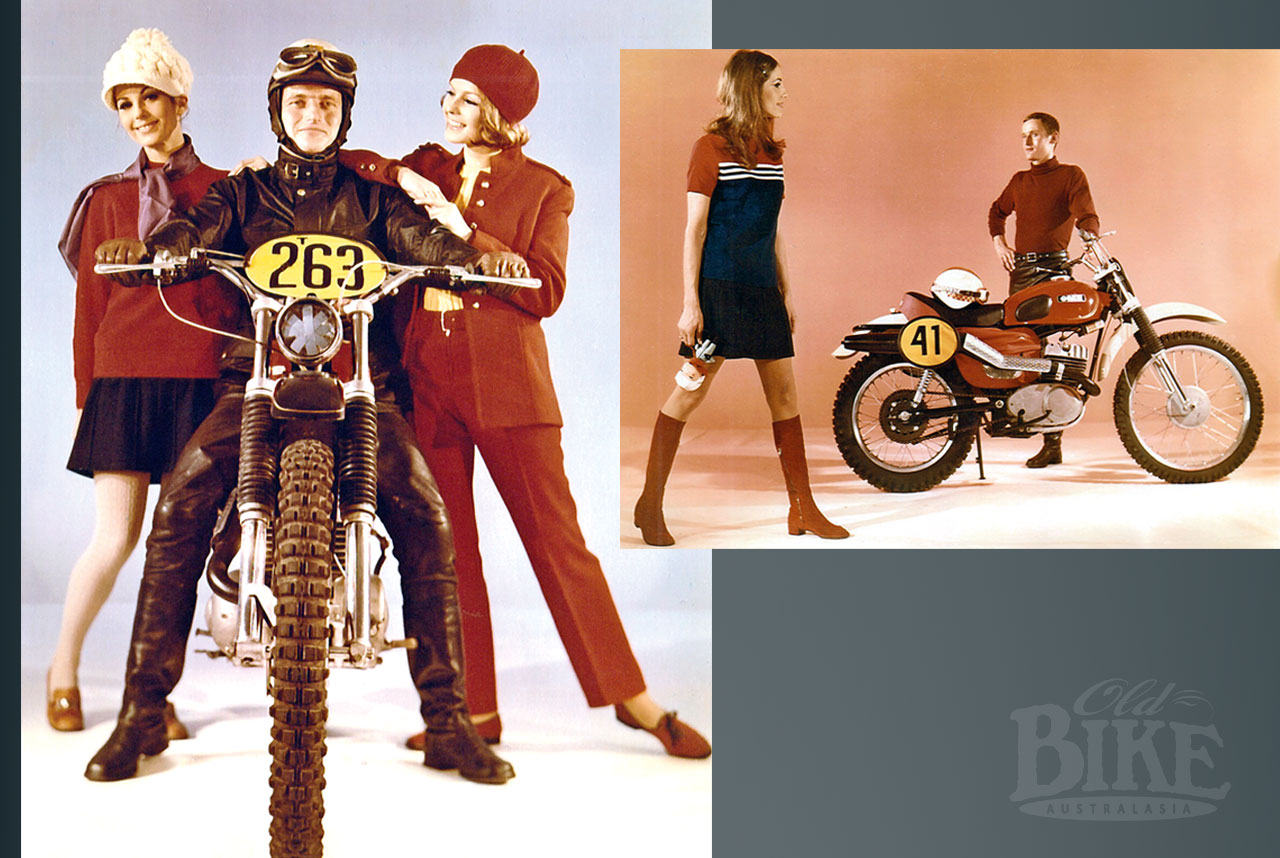
As well as not only rubbing other European nations’ noses in it, the Czechs were also the perennial rivals. As one Czech Trophy Team rider from the 1970s stated “the East Germans were the enemy – the ones we had to beat’’. So much for communist comrade camaraderie. The riders were true professionals and trained all year for this event. The bikes were ‘stone axe reliable’ and everything was made in the factory to exacting tolerances.
The production MZ ISDT bikes they sold were reputed to be assembled in the race shop by apprentices, as photos of the time suggest. While they differed little from the factory bikes in the 1960s, the production bikes made then and into the 1970s didn’t evolve much either. Early MZ ISDT bikes featured steering dampers, countershaft-driven speedos, bulging ignition cases and different paint (up to 1973). There was a later run of bikes around 1975 released to pretty much the same spec, except for different brake backing plates, front brake actuation, front wheel speedo drive, colour, rear foot brake position and slimmed ignition cover. They were an instant curio when released, and US magazine Cycle World nailed it when they tested one in April 1975, featuring a tester in retro gear (Belstaffs and pudding basin helmet) standing beside it. What worked in the 1960s was now a flexi, ponderous, rocket that you took your life in your hands when riding it.
I’ve used my ISDT model to commute and God help you if you loaded it up or stalled it at the lights. The crankshaft clutch was either in or out. That East German excuse for a carby (the DDR-made BVF – insert rude names here) had to be kept clean by blipping it or else it was a dangerous push through traffic to the side of the road, lay it down and wait for the ‘bubba bubba bubba barrrrang’ to clear it. Yes, it was fast. Rolling home on the freeway with the speedo needle dancing everywhere, I looked into a driver’s window at their speedo, 110km/h, and just pulled away. Each bike that left the factory was rumoured to be capable of 160km/h. British ISDT Triumph riders complained that in the 1965 final speed test, when they were flat on the tank, MZ riders would whistle past them. Let’s not talk about the brakes though.

Most of the weight was in the frame. (OK, and the steel seat base, guards, fork stanchions, airbox and tank). It feels like they used water pipe, and poor-quality water pipe at that. An owner of one in the early 1970s (a trail riding friend of John Burrows who lived down in the Otways) had the swingarm off most weeks with it in the vice and straightened the twisted arm with a crowbar. Harry was a bit blind and hit lots of stuff even when he made the corners. Yet the forks were ahead of their time, with cartridge damping internals and external springs. They were just overpowered by the bike. Comparing the 1970 model JAWAs with the MZs, (as I have both), the JAWA has a superior motor and while just as heavy, it has smoother power, more refined suspension, brakes and handling.
So, the bike is really a funky curio. While the East Germans dominated the ISDT in the 1960s, the Czechs were waiting. Bad luck ruined the Czech’s chances in the 1960s until it all came together when they dominated the 1970s. When ignition failure stopped the MZ bikes in the 1970 Spanish ISDT, MZ then took until 1987 to win the World Trophy. That was their last hurrah before the Iron Curtain collapsed.
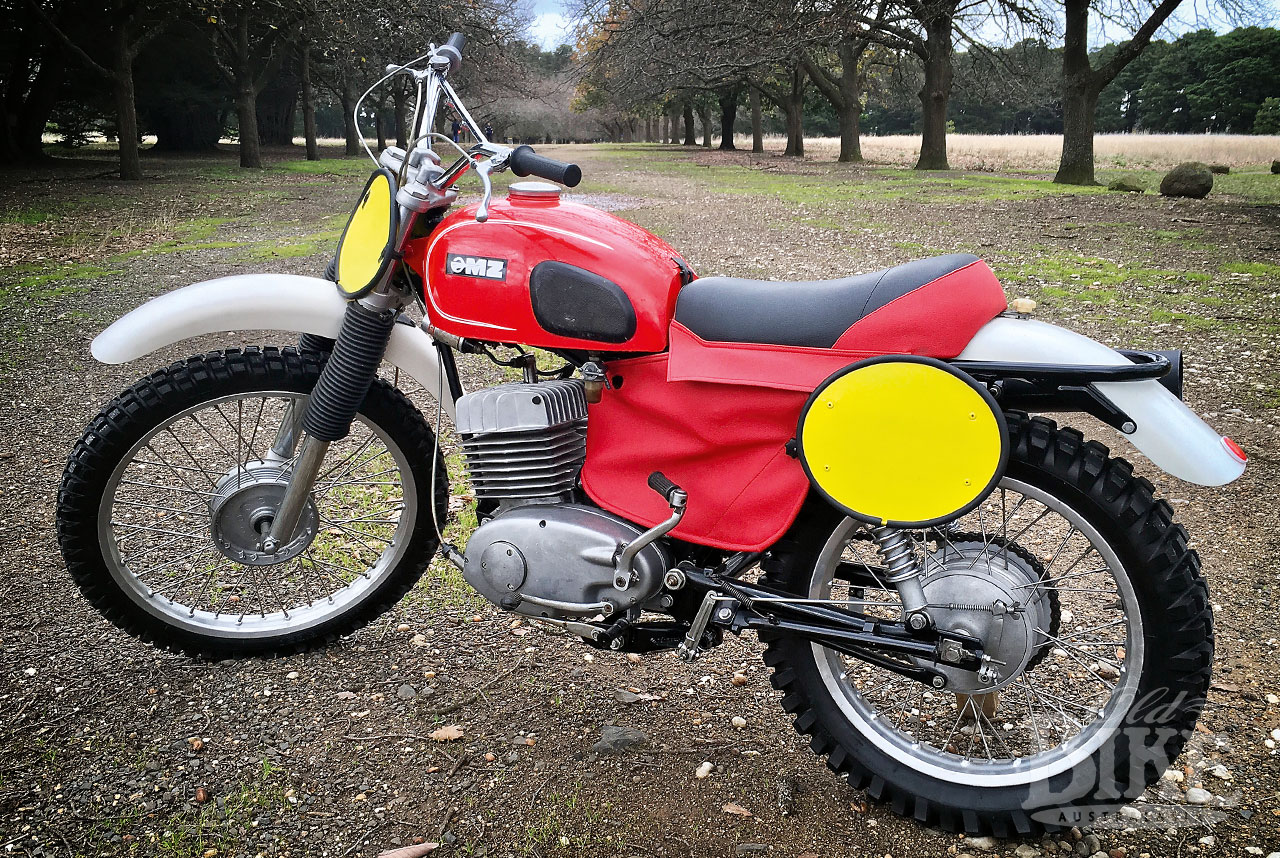
1970 MZ ETS 250/1-5 CC
This bike came to me fortuitously via a chain of owners and was bought by a friend who was aiming to keep me company with my ISDT enduro model. I’d fired him up to get it saying he couldn’t lose on it, and he needed a project. Something wasn’t right with it though. It was missing bits, nothing unusual in that – taillight, speedo, number boards, airbox shroud; and so we set to ordering those bits for it from Germany (Jens Muller’s Trophy-Sport.de). I thought it was a 1975 ISDT enduro model as it had the flat ignition cover on it and yet had no provision for a lighting coil? The headlight wasn’t wired up and only a single wire went to a single ignition coil. There was the usual two-way switch under the seat to swap coils if one failed, and there was the bracket to take a second coil, but it was missing. Strange.
Anyway, my friend persevered and got it running but then lost a bit of interest. So naturally I relieved him of it for what it owed him as I was intending to on-sell it.
Still, something wasn’t right. The tank was different, no mounting points for the handpump under it and it wasn’t held on by the tankbag and leather straps, but by front brackets that slotted over studs welded just behind the steering head. The fact the tank paint was a different colour didn’t seem important at the time. There was a bracket on the swingarm that looked as if it would hold a chain guide but since the chain was enclosed that didn’t make sense. The front mudguard was factory press molded fiberglass, not steel. The rear guard was steel but was shorter than the ISDT model and wasn’t cut down amateurishly, but with the genuine rolled edge. It also had holes in it that didn’t match any East German taillight. Much head scratching went on.

Trawling through eBay for MZ bits I came across Don Ince of Viking Motors, USA. Don took over MED International 26 years ago and has an incredible stock of all Edison Dye’s paperwork and accessory leftovers from the Husky, MZ and Zundapp days. He was advertising MZ Press photos of the ISDT and Cross-Country models. When I saw them, the penny dropped. There were 2 distinctive off-road models. This bike was a cross country model! Now it all made sense. Someone has tried to convert it into an ISDT model.
Further searching early 1970s USA Annuals from the major magazines turned up some gold. In Motorcyclist magazine’s 1972 Buyers Guide was a Press photo of the same Cross-Country motorcycle (#41 on the number boards) with the same rider on it as in the remaining photos I bought. Obviously, this was the Press photo sent to the magazine for inclusion in its feature on the MZ brand in the USA.
I knew a previous owner of the Cross-Country MZ, Murray Hicks. Murray was next owner after Herb Conlon, who was second from original owner Steve Jarvis who had died. Murray had owned this bike and an ISDT model and had both at the 1993 Vintage Motocross Nationals I attended. I had already owned my ISDT model that I bought out of Penrith five years ago but was having clutch problems, so I bagged a ride on the C-C. Whoa! Snappy powerband! Pretty amazing that 27 years later I’d own it. Rumour came down the line that Steve Jarvis had ridden the bike overseas. I tried to find the Jarvis family but no luck. We know Steve rode the 1980 ISDT, on a current Maico, but not much else. So, I asked Don Ince if he had any idea if this bike was sold in the USA? Bingo! He had the paperwork.
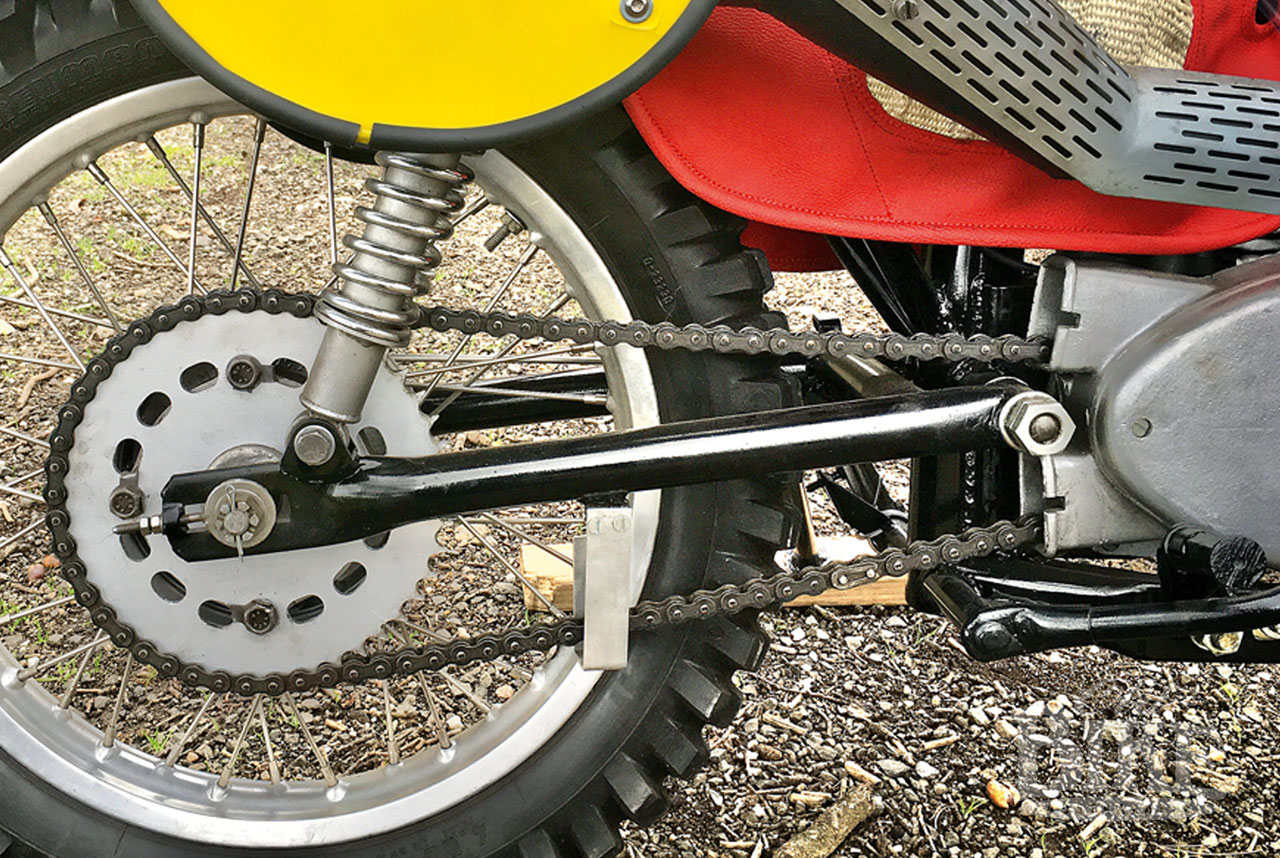
This Cross-Country model, built in 1970, frame #51440, engine # 62689 was delivered to the USA Importer Edison Dye of MED International in Palm Avenue, La Mesa, California in early 1970 and was requested by letter on April 16 as one of six bikes (the other 5 being ISDT models) by MZ Distributor Competition Enterprises of Sylvan Street West Covina, California; from Bill Saltzman – to be sent to Sportsman Cycle Sales of Washington East Blv, Las Vegas, Nevada. MED then receipted SCS for the sum of $699 for the MZ 250 Cross Country on April 23, 1970. Don speculated that Edison Dye or Casey Folks of SCS had sponsored Steve on the bike. Don has all the invoices of the MZs sold (he estimates about 1,000 models total) but less than 200 off-road models.
Looking at the Press photos of the C-C model and comparing it to mine, it all falls into place. Definitely someone has tried to make it into the ISDT model; even going so far as to fit the enclosed chain guard and the ISDT rear sprocket (luckily the original larger one came with the bike) and cutting off the end of the tapered exhaust and fitting the enduro end (the welding is way too neat). You can see the rear chain guide on the swingarm, the different tank mounting as well as the brighter tank colour matches the photo. Obviously frustrated by the lack of lighting and a way to mount the tankbag, a previous owner lost interest in it and the project stalled.
This was a spur to rip into it and return it to original spec. I stripped it down, had the frame and black bits blasted and painted, rechromed the fork lowers, levers and bars, checked out the top end (all fine), left the bottom end as all seemed good there, new cables, brakes relined, had the seat and shroud redone, scrubbed the rims (can’t get them too shiny), re-spoked the wheels and refitted the original East German tyres. Yes, it won’t get much use. I’d like to return the exhaust end to the more stylish tapered end but that can wait.
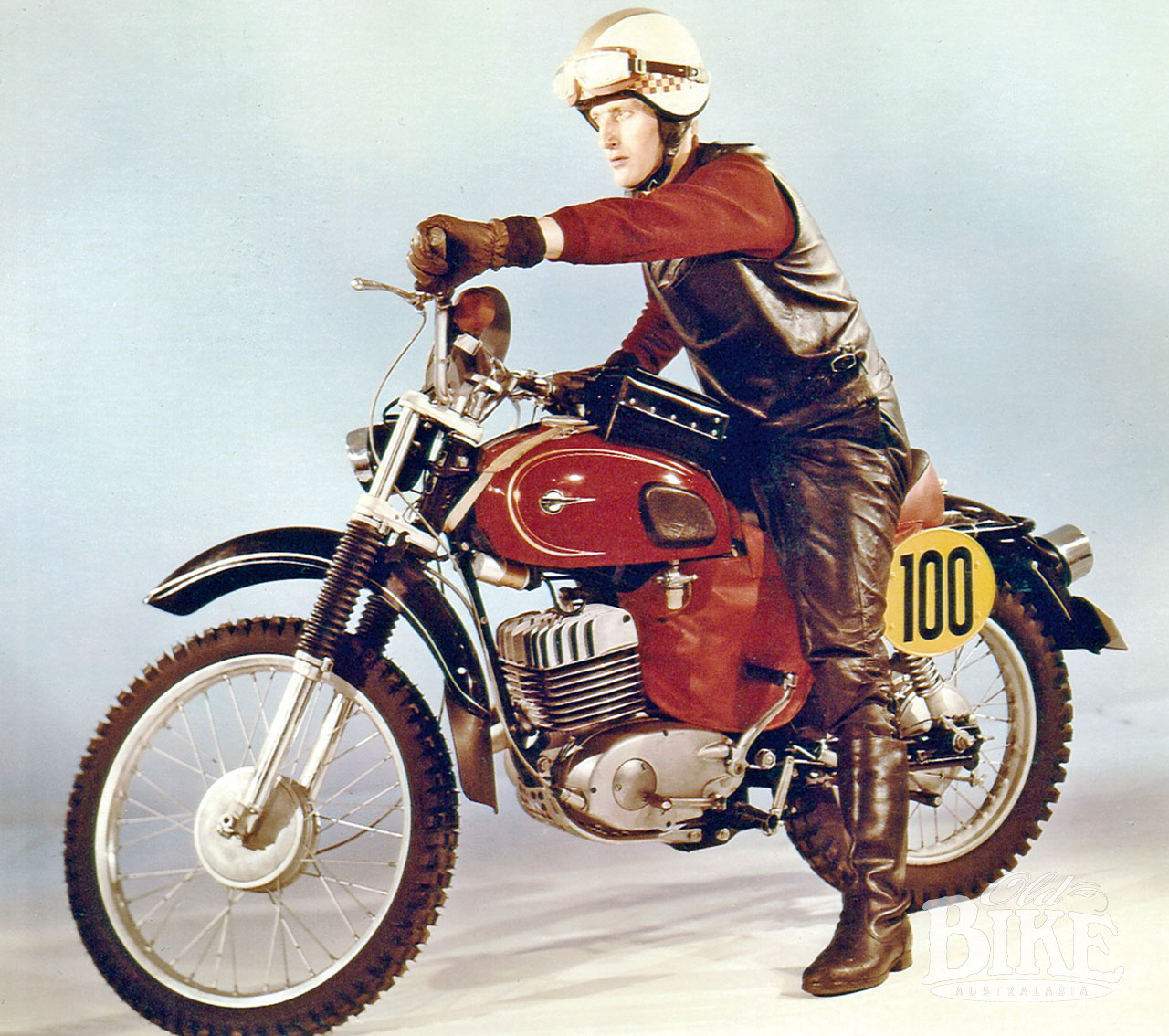
Now, this thing has to be ultra-rare. In my decades of MZ ownership I have never seen one for sale or featured in magazines or online. I have only ever seen one photo. As I mentioned, the Press photo missing of the Cross-Country from the ones I bought appeared in 1972 ‘Motorcycle Buyers Guide’ and did not feature in any other publications at the time. With a price tag of $920 compared to the invoiced price, it was a profitable mark up. The caption read: CROSS COUNTRY 250/is the desert riders special. It features 243cc two stroke single with five-speed gearbox, shielded and filtered intake system, 265-pound dry weight and a dyno-tuned exhaust system.
MZ ETS 250/1G-5
This is the ISDT one, built in 1970, frame #51483 and engine #61704. I bought an ISDT MZ 250 back in 1987 together with a Hercules 175 GS and a mate bought a CZ 250 Enduro all from an ex-dealer called Ivor in Penrith. I was always going to do it up but when a nicer model came up, I sold mine as a project and with the new one came a lot of spares – which I sold to Jens Muller, and so it didn’t cost me a heap to change over. I used all of the original parts from both bikes to make mine complete.
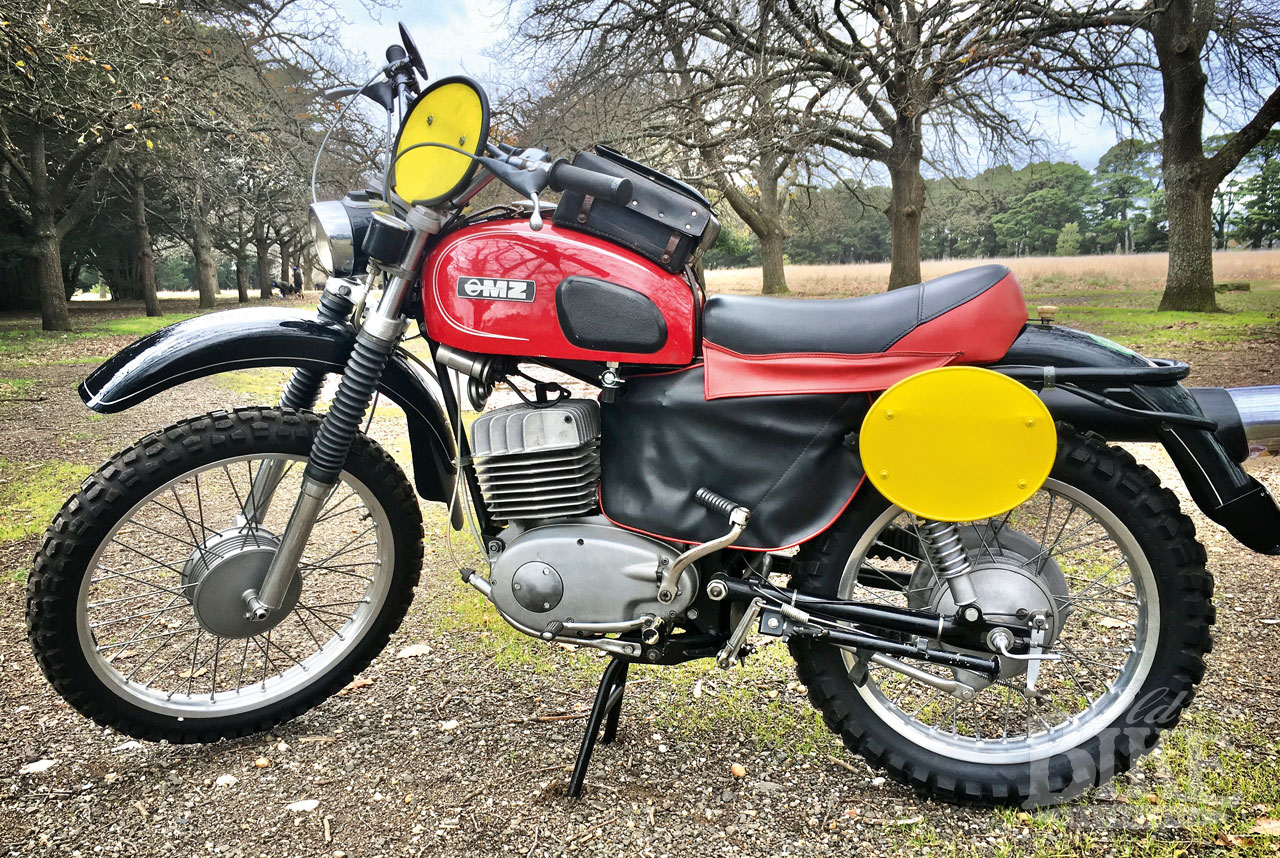
Two deviations from original were the centre stand I made up for it and fitting a Mikuni carby. The carby issue I’ve already described. The reason for the centre stand was that the sidestand mount was pretty fragile where it is welded to the swingarm and the first ISDT model I had tore a chunk out of the swingarm tube. The only hassle with the centre stand is the effort to haul it up onto it and the fact we couldn’t find a good place to mount a retaining spring – so good old rubber band technology came to the fore.
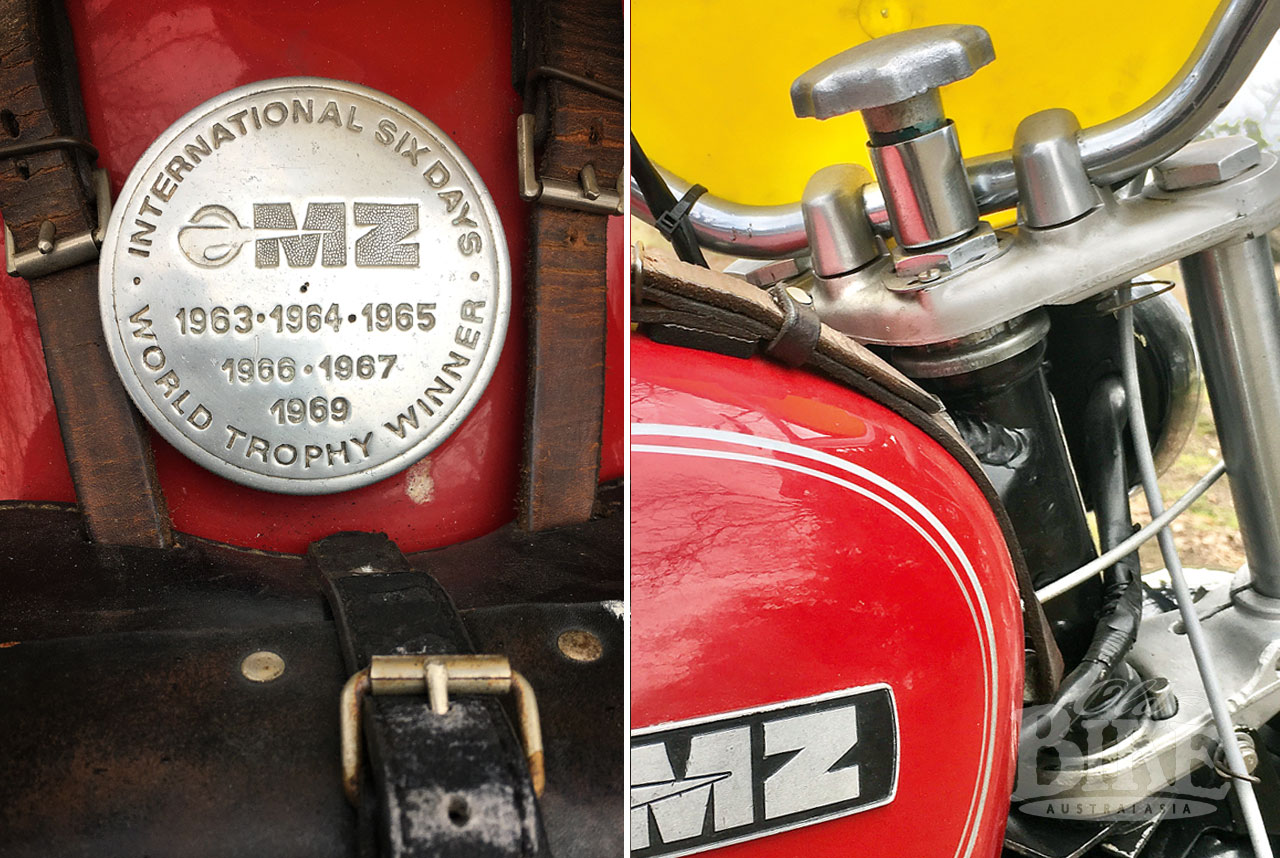
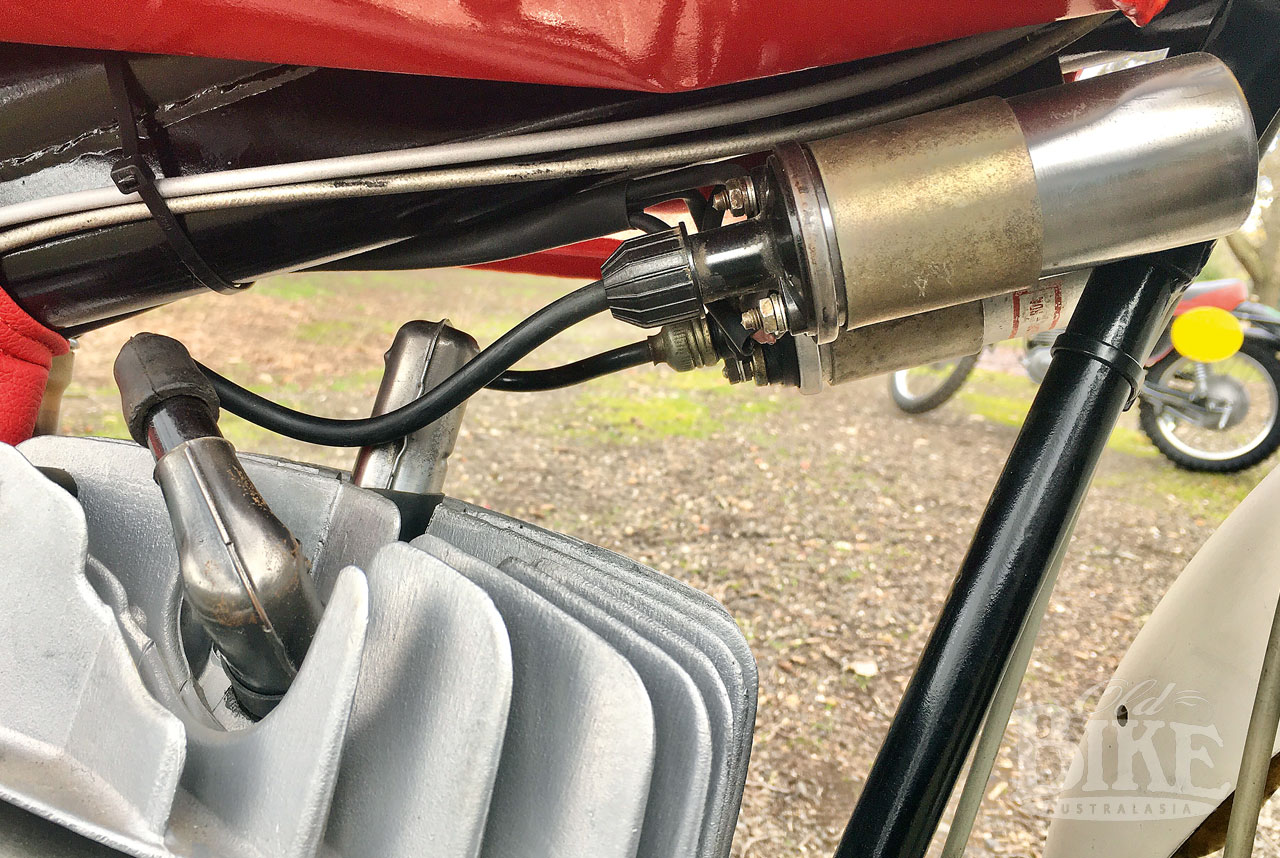

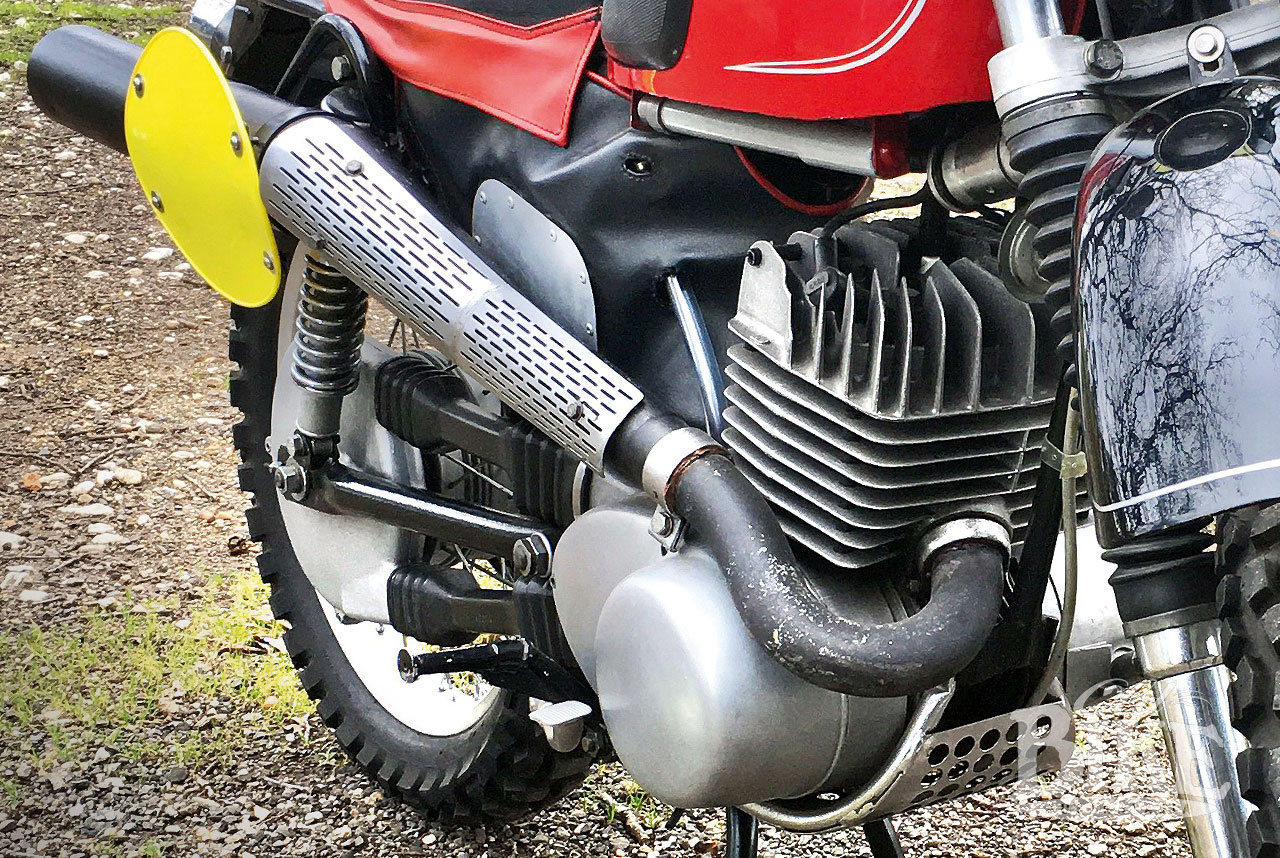
I’ve used this bike to get around town and through some easier dirt roads and it sure gets a lot of comments. While the weight is the limiting factor in tackling more serious trails you couldn’t kill the thing if you tried. Riding it gives you great respect for the East Germans who smashed through terrain and competition for six days. Now the bike mainly sits waiting for a tour around the block to get some exercise and generate comment from anyone unfamiliar with its history.
